Cited
as one of the most beautiful cities in Europe, Budapests extensive
World Heritage Site includes the banks of the Danube, the Buda Castle
Quarter, Andrássy Avenue, Heroes Square and the Millennium Underground
Railway, the second-oldest metro line in the world. It has around 80
geothermal springs, the worlds largest thermal water cave system, second
largest synagogue, and third largest Parliament building. The city
attracts about 4.4 million tourists a year, making it the 25th most
popular city in the world, and the 6th in Europe, according to
Euromonitor.
Considered
a financial hub in Central Europe, the city ranked third on Mastercards
Emerging Markets Index, and ranked as the most liveable Central or
Eastern European city on EIUs quality of life index. It is also ranked
as "the worlds second best city" by Condé Nast Traveler, and "Europes
7th most idyllic place to live" by Forbes, It is the highest ranked
Central/Eastern European city on Innovation Cities Top 100 index.
Budapest
is home to the headquarters of the European Institute of Innovation and
Technology (EIT), and the first foreign office of the China Investment
Promotion Agency (CIPA). Eighteen universities are situated in Budapest,
including the Central European University, Eötvös Loránd University and
the Budapest University of Technology and Economics.

The
first settlement on the territory of Budapest was built by Celts before
1 AD. It was later occupied by the Romans. The Roman settlement –
Aquincum – became the main city of Pannonia Inferior in 106 AD. At first
it was a military settlement and gradually the city raised around it
becoming the focal point of the commercial life. Today this area
correspond to the Óbuda district within Budapest. The Romans constructed
roads, amphitheaters, baths and houses with heated floors in this
fortified military camp. Acquincum is the foremost and best-conserved of
the Roman sites in Hungary. The archaeological site was turned into a
museum with inside and open-air section.
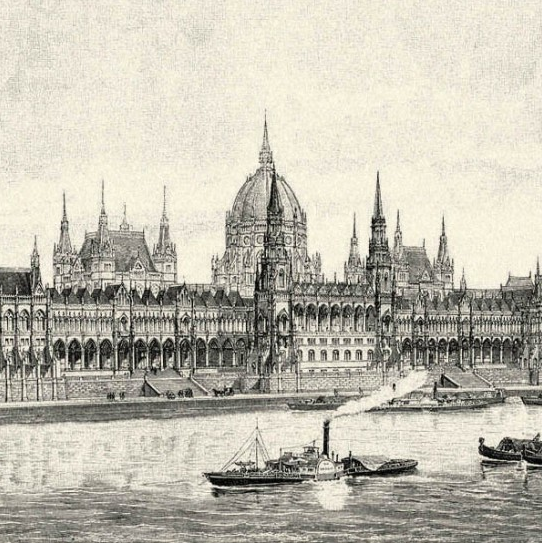
The
peace treaty of 829 added Pannonia to Bulgaria due to the victory of
Bulgarian army of Omurtag over the Holy Roman Empire of Louis the Pious.
Budapest arose out of two Bulgarian military frontiers, fortresses Buda
and Pest, situated on the two banks of Danube. Hungarians led by Árpád
settled in the territory at the end of the 9th century, and a century
later officially founded the Kingdom of Hungary. Research places the
probable residence of the Árpáds as an early place of central power near
what became Budapest. The Tatar invasion in the 13th century quickly
proved that defence is difficult on a plain. King Béla IV of Hungary
therefore ordered the construction of reinforced stone walls around the
towns and set his own royal palace on the top of the protecting hills of
Buda. In 1361 it became the capital of Hungary.
The cultural role
of Buda was particularly significant during the reign of King Matthias
Corvinus. The Italian Renaissance had a great influence on the city. His
library, the Bibliotheca Corviniana, was Europes greatest collection of
historical chronicles and philosophic and scientific works in the 15th
century, and second only in size to the Vatican Library. After the
foundation of the first Hungarian university in Pécs in 1367 (University
of Pécs), the second one was established in Óbuda in 1395 (University
of Óbuda). The first Hungarian book was printed in Buda in 1473. Buda
had about 5,000 inhabitants around 1500.
The Ottomans pillaged
Buda in 1526, besieged it in 1529, and finally occupied it in 1541. The
Turkish occupation lasted for more than 140 years. The Turks constructed
many fine bathing facilities within the city. Some of the baths that
the Turks erected during their occupation period are still in function
after 500 years (Rudas Baths and Király Baths). Under Ottoman rule many
Christians became Muslim. By 1547 the number of Christians was down to
about a thousand, and by 1647 it had fallen to only about seventy. The
unoccupied western part of the country became part of the Habsburg
Empire as Royal Hungary.
In 1686, two years after the unsuccessful
siege of Buda, a renewed campaign was started to enter the Hungarian
capital. This time, the Holy Leagues army was twice as large, containing
over 74,000 men, including German, Croat, Dutch, Hungarian, English,
Spanish, Czech, Italian, French, Burgundian, Danish and Swedish
soldiers, along with other Europeans as volunteers, artillerymen, and
officers, the Christian forces reconquered Buda, and in the next few
years, all of the former Hungarian lands, except areas near Timi?oara
(Temesvár), were taken from the Turks. In the 1699 Treaty of Karlowitz
these territorial changes were officially recognised, and in 1718 the
entire Kingdom of Hungary was removed from Ottoman rule. The city was
destroyed during the battle. Hungary was then incorporated into the
Habsburg Empire.

Budapest,
strategically placed at the centre of the Carpathian Basin, lies on an
ancient route linking the hills of Transdanubia with the Great Plain. By
road it is 216 kilometres (134 mi) south-east of Vienna, 545 kilometres
(339 mi) south of Warsaw, 1,565 kilometres (972 mi) south-west of
Moscow, 1,122 kilometres (697 mi) north of Athens, 788 kilometres
(490 mi) north-east of Milan, and 443 kilometres (275 mi) south-east of
Prague.
The wide Danube was always fordable at this point because
of a small number of islands in the middle of the river. The city has
marked topographical contrasts: Buda is built on the higher river
terraces and hills of the western side, while the considerably larger
Pest spreads out on a flat and featureless sand plain on the river’s
opposite bank. Pests terrain rises with a slight eastward gradient, so
the easternmost parts of the city lie at the same altitude as Budas
smallest hills, notably Gellért Hill and Castle Hill.
The Buda
hills consist mainly of limestone and dolomite, the water created
speleothems, the most famous ones being the Pálvölgyi cave (total length
7200 m) and the Szeml?hegyi cave (total length 2200 m). The hills were
formed in the Triassic Period. The highest point of the hills and of
Budapest is János hill, at 527 metres (1,729 ft) above sea level. The
lowest point is the line of the Danube which is 96 metres (315 ft) above
sea level. Budapest is also rich in green areas. Of the 525 square
kilometres (203 sq mi) occupied by the city, 83 square kilometres
(32 sq mi) is green area, park and forest. The forests of Buda hills are
environmentally protected.
The citys importance in terms of
traffic is very central, because all major European roads and European
railway lines lead to Budapest. The Danube was and is still an important
water-way and this region in the centre of the Carpathian Basin lies at
the cross-roads of trade routes. Budapest is the only capital city in
the world which has thermal springs. Some 125 springs produce 70 million
litres of thermal water a day, with temperatures ranging up to 58
Celsius. Some of these waters have medicinal effects due to their
medically valuable mineral contents.
The 525 square kilometres
(203 sq mi) area of Budapest lies in Central Hungary surrounded by
settlements of the agglomeration in Pest county. The capital extends 25
and 29 km (16 and 18 mi) in the north-south, east-west direction
respectively. The Danube enters the city from the north; later it
encircles two islands, Óbuda Island and Margaret Island. The third
island Csepel Island is the largest of the Budapest Danube islands,
however only its northernmost tip is within city limits. The river that
separates the two parts of the city is 230 m (755 ft) wide at its
narrowest point in Budapest. Pest lies on the flat terrain of the Great
Plain while Buda is rather hilly.
Budapest
is a significant economic hub, classified as an Alpha- World city
(known as "major world city") in the study of Globalization and World
Cities Research Network. On national level Budapest is definitely
primate city of Hungary regarding the economy and business also,
accounts for 39% of the national income. Budapest had a gross
metropolitan product of almost $100 billion in 2012, making it one of
the largest regional economy in the European Union. According to the
Eurostat GDP per capita in purchasing power parity is 147% of the EU
average in Budapest, which means €37.632 ($52.770) per capita. Budapest
is also among the Top 100 GDP performing cities in the world, measured
by PricewaterhouseCoopers.

The
neo-Gothic Parliament, the biggest building in Hungary with its 268
metres (879 ft) length, containing amongst other things the Hungarian
Crown Jewels. Saint Stephens Basilica, where the Holy Right Hand of the
founder of Hungary, King Saint Stephen is on display. The Hungarian
cuisine and café culture: for example, Gerbeaud Café, and the Százéves,
Biarritz, Fortuna, Alabárdos, Arany Szarvas, Kárpátia and the world
famous Mátyás Pince Restaurants. There are Roman remains at the Aquincum
Museum, and historic furniture at the Nagytétény Castle Museum, just 2
out of 223 museums in Budapest. Another historical museum is the House
of Terror, hosted in the building that was the venue of the Nazi
Headquarters. The Castle Hill, the River Danube embankments and the
whole of Andrássy út have been officially recognized as UNESCO World
Heritage Sites.
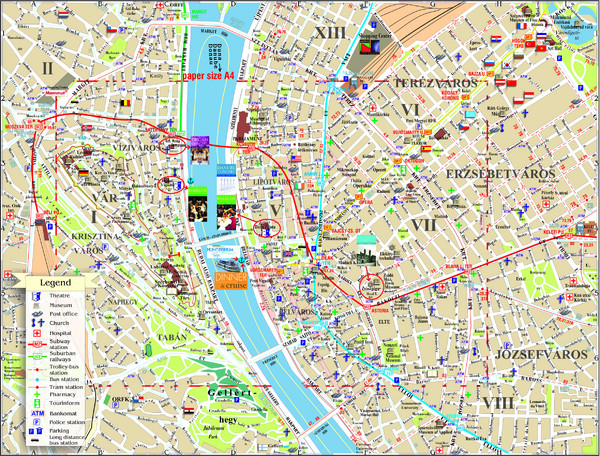
Castle
Hill and the Castle District; there are three churches here, six
museums, and a host of interesting buildings, streets and squares. The
former Royal Palace is one of the symbols of Hungary – and has been the
scene of battles and wars ever since the 13th century. Nowadays it
houses two impressive museums and the National Széchenyi Library. The
nearby Sándor Palace contains the offices and official residence of the
President of Hungary. The seven-hundred year-old Matthias Church is one
of the jewels of Budapest, it is in neo-Gothic style, decorated with
coloured shingles and elegant pinnacles. Next to it is an equestrian
statue of the first king of Hungary, King Saint Stephen, and behind that
is the Fishermans Bastion, built in 1905 by the architect Frigyes
Schulek, the Fishermens Bastions owes its name to the namesake
corporation that during the Middle Ages was responsible of the defence
of this part of ramparts, from where opens out a panoramic view of the
whole city. Statues of the Turul, the mythical guardian bird of Hungary,
can be found in both the Castle District and the Twelfth District.
In
Pest, arguably the most important sight is Andrássy út. This Avenue is
an elegant 2.5 km (2 mi) long tree-lined street that covers the distance
from Deák Ferenc tér to the Heroes Square. On this Avenue overlook many
important sites. It is a UNESCO World Heritage Site. As far as Kodály
körönd and Oktogon both sides are lined with large shops and flats built
close together. Between there and Heroes Square the houses are detached
and altogether grander. Under the whole runs continental Europes oldest
Underground railway, most of whose stations retain their original
appearance. Heroes Square is dominated by the Millenary Monument, with
the Tomb of the Unknown Soldier in front. To the sides are the Museum of
Fine Arts and the Kunsthalle Budapest, and behind City Park opens out,
with Vajdahunyad Castle. One of the jewels of Andrássy út is the
Hungarian State Opera House. Statue Park, a theme park with striking
statues of the Communist era, is located just outside the main city and
is accessible by public transport.
The Dohány Street Synagogue is
the largest synagogue in Europe, and the second largest active synagogue
in the world. The synagogue is located in the Jewish district taking up
several blocks in central Budapest bordered by Király utca, Wesselényi
utca, Grand Boulevard and Bajcsy Zsilinszky road. It was built in
moorish revival style in 1859 and has a capacity of 3000 people.
Adjacent to it is a sculpture reproducing a weeping willow tree in steel
to commemorate the Hungarian victims of the Holocaust. The city is also
home to the largest medicinal bath in Europe (Széchenyi Medicinal Bath)
and the third largest Parliament building in the world, once the
largest in the world. Other attractions are the bridges of the capital.
Seven bridges provide crossings over the Danube, and from north to south
are: the Árpád Bridge (built in 1950 at the north of Margaret Island);
the Margaret Bridge (built in 1901, destroyed during the war by an
explosion and then rebuilt in 1948); the Chain Bridge (built in 1849,
destroyed during the II World War and the rebuilt in 1949); the
Elisabeth Bridge (completed in 1903 and dedicated to the murdered Queen
Elisabeth, it was destroyed by the Germans during the war and rebuilt in
1964); the Liberty Bridge (opened in 1896 and rebuilt in 1989 in Art
Nouveau style); the Pet?fi Bridge (completed in 1937, destroyed during
the war and rebuilt in 1952); the Rákóczi Bridge (completed in 1995).
Most remarkable for their beauty are the Margaret bridge, the Chain
bridge and the Liberty bridge. The worlds largest panorama photograph
was created in (and of) Budapest in 2010.
Tourists visiting
Budapest can receive free maps and information from the nonprofit
Budapest Festival and Tourism Center at its info-points. The info
centers also offer the Budapest Card which allows free public transit
and discounts for several museums, restaurants and other places of
interest. Cards are available for 24, 48 or 72-hour durations. The city
is also well known for its ruin bars both day and night.

The
culture of Budapest is reflected by Budapests size and variety. Most
Hungarian cultural movements first emerged in the city. Budapest is an
important center for music, film, theatre, dance and visual art. Artists
have been drawn into the city by opportunity, as the city government
funds the arts with adequate financial resources.
Budapest
is packed with museums and galleries, and there are plenty of temporary
exhibitions in the most unlikely of settings, particularly in summer.
The city glories in 223 museums and galleries, which presents several
memories, not only the Hungarian historical, art and science ones, but
also the memories of universal and European culture and science. Here
are the greatest examples among them: the Hungarian National Museum, the
Hungarian National Gallery, the Museum of Fine Arts (where can see the
pictures of Hungarian painters, like Victor Vasarely, Mihály Munkácsy
and a great collection about Italian art, Dutch art, Spanish art and
British art from before the 19th century and French art, British art,
German art, Austrian art after the 19th century), the House of Terror,
the Budapest Historical Museum, the Aquincum Museum, the Memento Park,
Museum of Applied Arts and the contemporary arts exhibition Palace of
Arts Budapest. In Budapest there are currently 837 different monuments,
which represent the most of the European artistic style. The classical
and unique Hungarian Art Nouveau buildings are prominent.
A lot of
libraries have unique collections in Budapest, such as the National
Széchenyi Library, which keeps historical relics from the age before the
printing of books. The Metropolitan Szabó Ervin Library plays an
important role in the general education of the capitals population.
Other libraries: The Library of the Hungarian Academy of Sciences,
Eötvös University Library, the Parliamentary Library and the National
Library of Foreign Literature.

Several
annual festivals take place in Budapest, such as Sziget Festival, one
of the largest outdoor music festival in Europe, the Budapest Spring
Festival presents on concerts at several venues across the city. The
Budapest Autumn Festival brings free music, dance, art, and other
cultural events to the streets of the city. Budapest Wine Festival and
Budapest Pálinka Festival occurs each May and gastronomy festivals focus
on culinary pleasures. Budapest Pride (or Budapest Pride Film and
Cultural Festival) occurs annually across the city, and usually involves
a parade on the Andrássy Avenue. Other festivals include the Budapest
Fringe Festival, which brings more than 500 artists in about 50 shows to
produce a wide range of interesting works in alternative theatre,
dance, music and comedy outside the mainstream. The LOW Festival was a
multidisciplinary contemporary cultural festival held in Hungary in the
cities Budapest and Pécs from February till March. The name of the
festival alludes to the Low Countries, the region encompassing the
Netherlands and Flanders. Budapest Jewish Summer Festival, in late
August, is also one of the largest in Europe.

There
are many symphony orchestras in Budapest with the Budapest Philharmonic
Orchestra being preeminent orchestras. It was founded in 1853 by Ferenc
Erkel and still presents regular concerts in the Hungarian State Opera
House and National Theatre.
The dance tradition of the Carpathian
Basin is a unique area of the European dance culture, which is also a
special transition between the Balkans and Western Europe regions. The
city is home to several authentic Hungarian folk dance ensembles which
range from small ensembles to professional troupes. Budapest is one of
the few cities in the world where a high school for folk dance learning
exists.

In
the modern age, Budapest developed its own peculiar cuisine, based on
products of the nearby region, as lamb, pork and vegetables special in
the region. Modern Hungarian cuisine is a synthesis of ancient Asiatic
components mixed with French, Germanic, Italian, and Slavic elements.
The food of Hungary can be considered a melting pot of the continent,
with a culinary base formed from its own, original Magyar cuisine.
Considerable numbers of Saxons, Armenians, Italians, Jews and Serbs
settled in the Hungarian basin and in Transylvania, also contributing
with different new dishes. Elements of ancient Turkish cuisine were
adopted during the Ottoman era, in the form of sweets (for example
different nougats, like white nougat called
törökméz, quince (
birsalma),
Turkish delight), Turkish coffee or rice dishes like pilaf, meat and
vegetable dishes like the eggplant, used in eggplant salads and
appetizers, stuffed peppers and stuffed cabbage called
töltött káposzta.
Hungarian cuisine was influenced by Austrian cuisine under the
Austro-Hungarian Empire, dishes and methods of food preparation have
often been borrowed from Austrian cuisine, and vice versa.
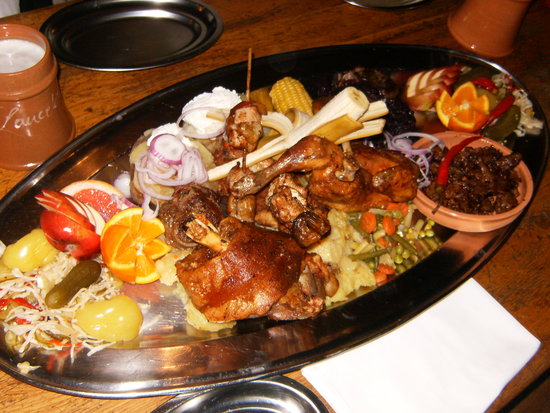
Budapest
restaurants reflect diversity, with menus carrying traditional regional
cuisine, fusions of various culinary influences, or innovating in the
leading edge of new techniques. Budapest food shops also have a solid
reputation for supplying quality specialised culinary products and
supplies, reputations that are often built up over generations. These
include many shops, such as Café Gerbeaud, one of the greatest and most
traditional coffeehouses in Europe, or the Gundel restaurant and gastro
shop in the City Park. Diners can also find the highest quality foods
served in several Michelin-starred restaurants, like Onyx, Costes or
Borkonyha.





















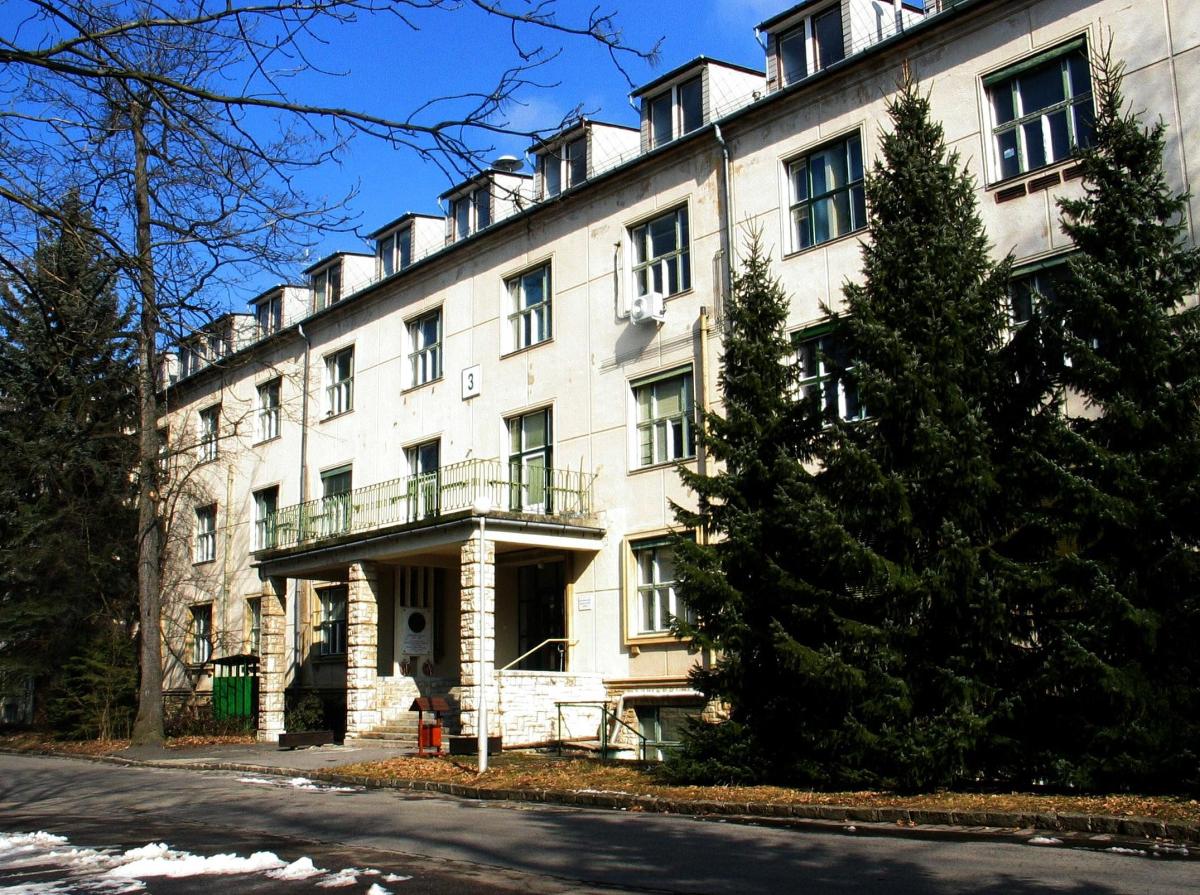
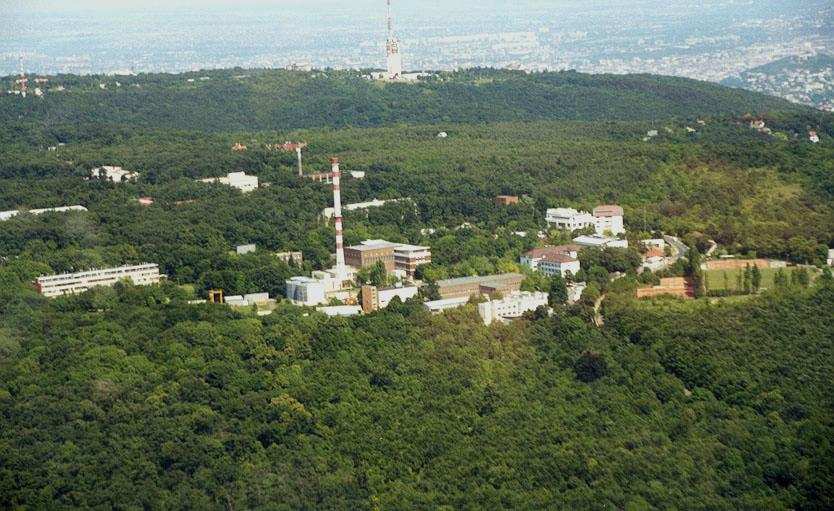
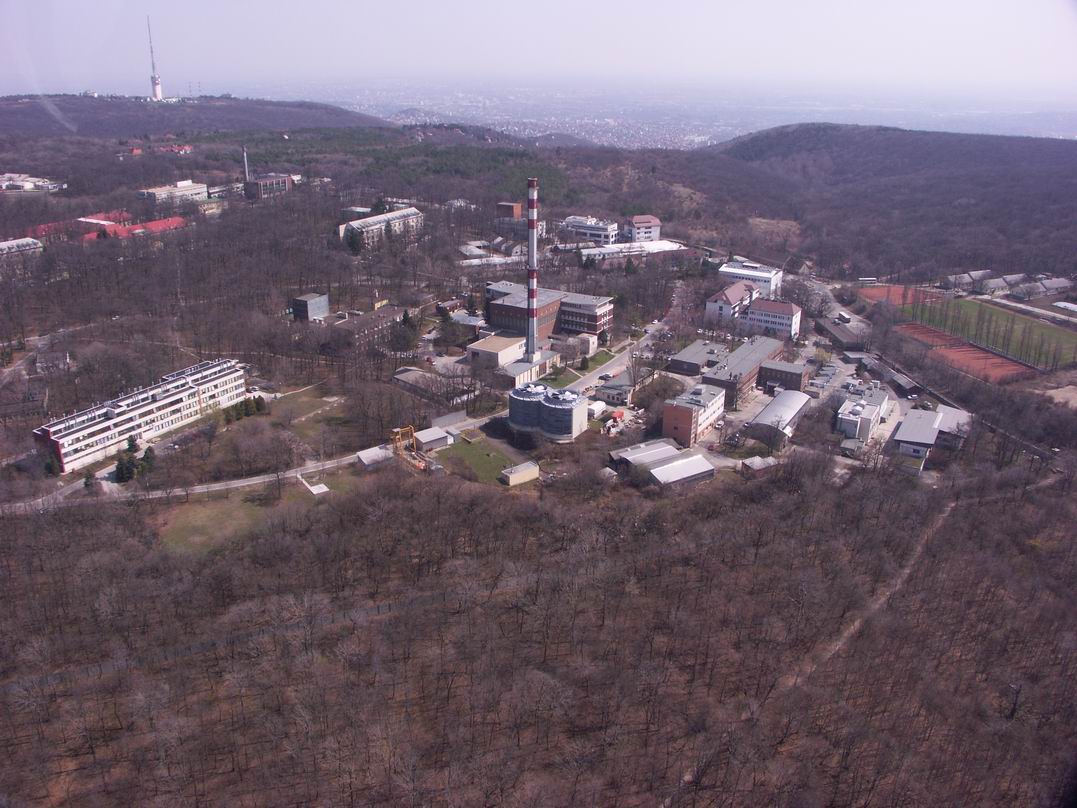

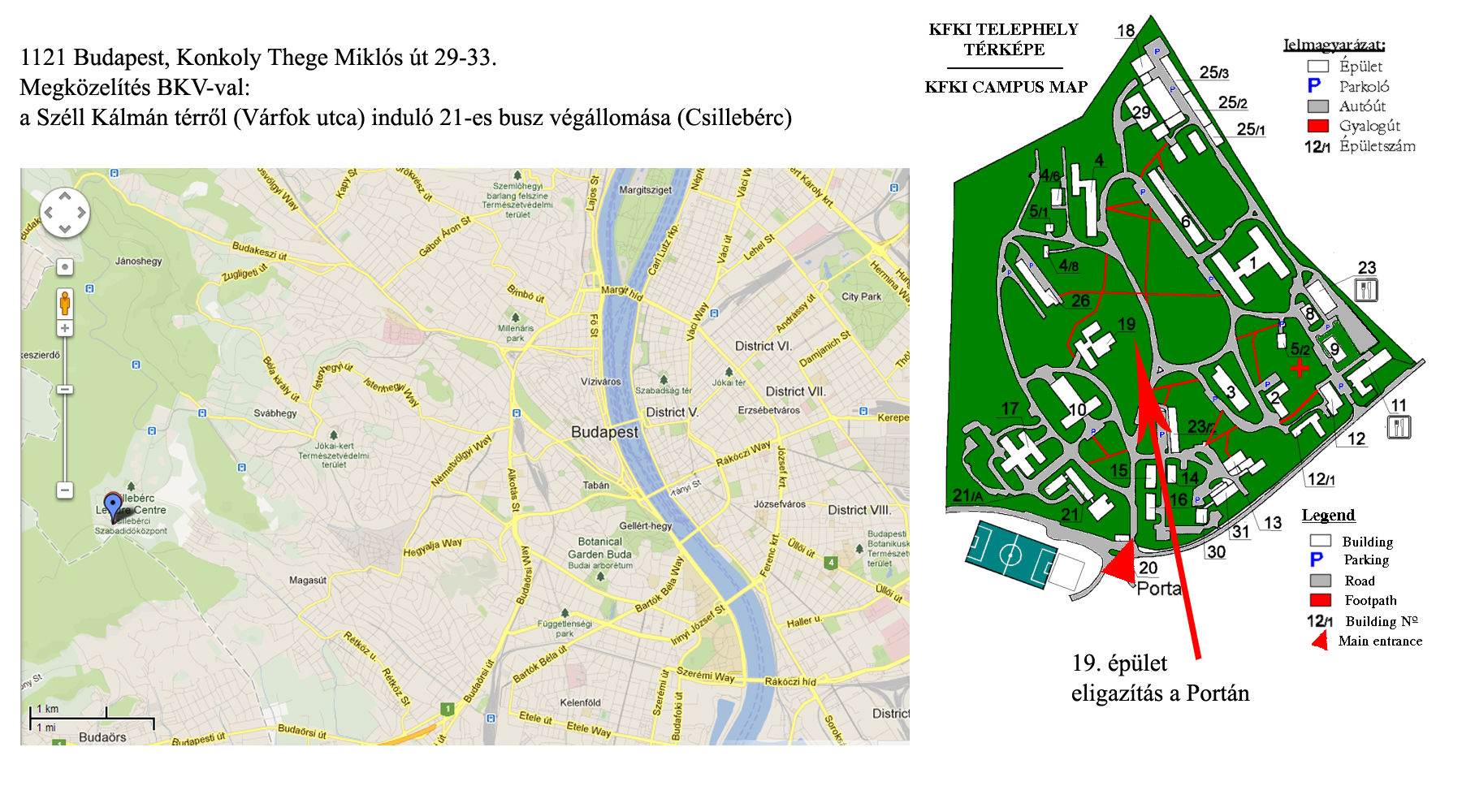


 The
first settlement on the territory of Budapest was built by Celts before
1 AD. It was later occupied by the Romans. The Roman settlement –
Aquincum – became the main city of Pannonia Inferior in 106 AD. At first
it was a military settlement and gradually the city raised around it
becoming the focal point of the commercial life. Today this area
correspond to the Óbuda district within Budapest. The Romans constructed
roads, amphitheaters, baths and houses with heated floors in this
fortified military camp. Acquincum is the foremost and best-conserved of
the Roman sites in Hungary. The archaeological site was turned into a
museum with inside and open-air section.
The
first settlement on the territory of Budapest was built by Celts before
1 AD. It was later occupied by the Romans. The Roman settlement –
Aquincum – became the main city of Pannonia Inferior in 106 AD. At first
it was a military settlement and gradually the city raised around it
becoming the focal point of the commercial life. Today this area
correspond to the Óbuda district within Budapest. The Romans constructed
roads, amphitheaters, baths and houses with heated floors in this
fortified military camp. Acquincum is the foremost and best-conserved of
the Roman sites in Hungary. The archaeological site was turned into a
museum with inside and open-air section. The
peace treaty of 829 added Pannonia to Bulgaria due to the victory of
Bulgarian army of Omurtag over the Holy Roman Empire of Louis the Pious.
Budapest arose out of two Bulgarian military frontiers, fortresses Buda
and Pest, situated on the two banks of Danube. Hungarians led by Árpád
settled in the territory at the end of the 9th century, and a century
later officially founded the Kingdom of Hungary. Research places the
probable residence of the Árpáds as an early place of central power near
what became Budapest. The Tatar invasion in the 13th century quickly
proved that defence is difficult on a plain. King Béla IV of Hungary
therefore ordered the construction of reinforced stone walls around the
towns and set his own royal palace on the top of the protecting hills of
Buda. In 1361 it became the capital of Hungary.
The
peace treaty of 829 added Pannonia to Bulgaria due to the victory of
Bulgarian army of Omurtag over the Holy Roman Empire of Louis the Pious.
Budapest arose out of two Bulgarian military frontiers, fortresses Buda
and Pest, situated on the two banks of Danube. Hungarians led by Árpád
settled in the territory at the end of the 9th century, and a century
later officially founded the Kingdom of Hungary. Research places the
probable residence of the Árpáds as an early place of central power near
what became Budapest. The Tatar invasion in the 13th century quickly
proved that defence is difficult on a plain. King Béla IV of Hungary
therefore ordered the construction of reinforced stone walls around the
towns and set his own royal palace on the top of the protecting hills of
Buda. In 1361 it became the capital of Hungary. Budapest,
strategically placed at the centre of the Carpathian Basin, lies on an
ancient route linking the hills of Transdanubia with the Great Plain. By
road it is 216 kilometres (134 mi) south-east of Vienna, 545 kilometres
(339 mi) south of Warsaw, 1,565 kilometres (972 mi) south-west of
Moscow, 1,122 kilometres (697 mi) north of Athens, 788 kilometres
(490 mi) north-east of Milan, and 443 kilometres (275 mi) south-east of
Prague.
Budapest,
strategically placed at the centre of the Carpathian Basin, lies on an
ancient route linking the hills of Transdanubia with the Great Plain. By
road it is 216 kilometres (134 mi) south-east of Vienna, 545 kilometres
(339 mi) south of Warsaw, 1,565 kilometres (972 mi) south-west of
Moscow, 1,122 kilometres (697 mi) north of Athens, 788 kilometres
(490 mi) north-east of Milan, and 443 kilometres (275 mi) south-east of
Prague. The
neo-Gothic Parliament, the biggest building in Hungary with its 268
metres (879 ft) length, containing amongst other things the Hungarian
Crown Jewels. Saint Stephens Basilica, where the Holy Right Hand of the
founder of Hungary, King Saint Stephen is on display. The Hungarian
cuisine and café culture: for example, Gerbeaud Café, and the Százéves,
Biarritz, Fortuna, Alabárdos, Arany Szarvas, Kárpátia and the world
famous Mátyás Pince Restaurants. There are Roman remains at the Aquincum
Museum, and historic furniture at the Nagytétény Castle Museum, just 2
out of 223 museums in Budapest. Another historical museum is the House
of Terror, hosted in the building that was the venue of the Nazi
Headquarters. The Castle Hill, the River Danube embankments and the
whole of Andrássy út have been officially recognized as UNESCO World
Heritage Sites.
The
neo-Gothic Parliament, the biggest building in Hungary with its 268
metres (879 ft) length, containing amongst other things the Hungarian
Crown Jewels. Saint Stephens Basilica, where the Holy Right Hand of the
founder of Hungary, King Saint Stephen is on display. The Hungarian
cuisine and café culture: for example, Gerbeaud Café, and the Százéves,
Biarritz, Fortuna, Alabárdos, Arany Szarvas, Kárpátia and the world
famous Mátyás Pince Restaurants. There are Roman remains at the Aquincum
Museum, and historic furniture at the Nagytétény Castle Museum, just 2
out of 223 museums in Budapest. Another historical museum is the House
of Terror, hosted in the building that was the venue of the Nazi
Headquarters. The Castle Hill, the River Danube embankments and the
whole of Andrássy út have been officially recognized as UNESCO World
Heritage Sites. Castle
Hill and the Castle District; there are three churches here, six
museums, and a host of interesting buildings, streets and squares. The
former Royal Palace is one of the symbols of Hungary – and has been the
scene of battles and wars ever since the 13th century. Nowadays it
houses two impressive museums and the National Széchenyi Library. The
nearby Sándor Palace contains the offices and official residence of the
President of Hungary. The seven-hundred year-old Matthias Church is one
of the jewels of Budapest, it is in neo-Gothic style, decorated with
coloured shingles and elegant pinnacles. Next to it is an equestrian
statue of the first king of Hungary, King Saint Stephen, and behind that
is the Fishermans Bastion, built in 1905 by the architect Frigyes
Schulek, the Fishermens Bastions owes its name to the namesake
corporation that during the Middle Ages was responsible of the defence
of this part of ramparts, from where opens out a panoramic view of the
whole city. Statues of the Turul, the mythical guardian bird of Hungary,
can be found in both the Castle District and the Twelfth District.
Castle
Hill and the Castle District; there are three churches here, six
museums, and a host of interesting buildings, streets and squares. The
former Royal Palace is one of the symbols of Hungary – and has been the
scene of battles and wars ever since the 13th century. Nowadays it
houses two impressive museums and the National Széchenyi Library. The
nearby Sándor Palace contains the offices and official residence of the
President of Hungary. The seven-hundred year-old Matthias Church is one
of the jewels of Budapest, it is in neo-Gothic style, decorated with
coloured shingles and elegant pinnacles. Next to it is an equestrian
statue of the first king of Hungary, King Saint Stephen, and behind that
is the Fishermans Bastion, built in 1905 by the architect Frigyes
Schulek, the Fishermens Bastions owes its name to the namesake
corporation that during the Middle Ages was responsible of the defence
of this part of ramparts, from where opens out a panoramic view of the
whole city. Statues of the Turul, the mythical guardian bird of Hungary,
can be found in both the Castle District and the Twelfth District. The
culture of Budapest is reflected by Budapests size and variety. Most
Hungarian cultural movements first emerged in the city. Budapest is an
important center for music, film, theatre, dance and visual art. Artists
have been drawn into the city by opportunity, as the city government
funds the arts with adequate financial resources.
The
culture of Budapest is reflected by Budapests size and variety. Most
Hungarian cultural movements first emerged in the city. Budapest is an
important center for music, film, theatre, dance and visual art. Artists
have been drawn into the city by opportunity, as the city government
funds the arts with adequate financial resources. Several
annual festivals take place in Budapest, such as Sziget Festival, one
of the largest outdoor music festival in Europe, the Budapest Spring
Festival presents on concerts at several venues across the city. The
Budapest Autumn Festival brings free music, dance, art, and other
cultural events to the streets of the city. Budapest Wine Festival and
Budapest Pálinka Festival occurs each May and gastronomy festivals focus
on culinary pleasures. Budapest Pride (or Budapest Pride Film and
Cultural Festival) occurs annually across the city, and usually involves
a parade on the Andrássy Avenue. Other festivals include the Budapest
Fringe Festival, which brings more than 500 artists in about 50 shows to
produce a wide range of interesting works in alternative theatre,
dance, music and comedy outside the mainstream. The LOW Festival was a
multidisciplinary contemporary cultural festival held in Hungary in the
cities Budapest and Pécs from February till March. The name of the
festival alludes to the Low Countries, the region encompassing the
Netherlands and Flanders. Budapest Jewish Summer Festival, in late
August, is also one of the largest in Europe.
Several
annual festivals take place in Budapest, such as Sziget Festival, one
of the largest outdoor music festival in Europe, the Budapest Spring
Festival presents on concerts at several venues across the city. The
Budapest Autumn Festival brings free music, dance, art, and other
cultural events to the streets of the city. Budapest Wine Festival and
Budapest Pálinka Festival occurs each May and gastronomy festivals focus
on culinary pleasures. Budapest Pride (or Budapest Pride Film and
Cultural Festival) occurs annually across the city, and usually involves
a parade on the Andrássy Avenue. Other festivals include the Budapest
Fringe Festival, which brings more than 500 artists in about 50 shows to
produce a wide range of interesting works in alternative theatre,
dance, music and comedy outside the mainstream. The LOW Festival was a
multidisciplinary contemporary cultural festival held in Hungary in the
cities Budapest and Pécs from February till March. The name of the
festival alludes to the Low Countries, the region encompassing the
Netherlands and Flanders. Budapest Jewish Summer Festival, in late
August, is also one of the largest in Europe. There
are many symphony orchestras in Budapest with the Budapest Philharmonic
Orchestra being preeminent orchestras. It was founded in 1853 by Ferenc
Erkel and still presents regular concerts in the Hungarian State Opera
House and National Theatre.
There
are many symphony orchestras in Budapest with the Budapest Philharmonic
Orchestra being preeminent orchestras. It was founded in 1853 by Ferenc
Erkel and still presents regular concerts in the Hungarian State Opera
House and National Theatre. In
the modern age, Budapest developed its own peculiar cuisine, based on
products of the nearby region, as lamb, pork and vegetables special in
the region. Modern Hungarian cuisine is a synthesis of ancient Asiatic
components mixed with French, Germanic, Italian, and Slavic elements.
The food of Hungary can be considered a melting pot of the continent,
with a culinary base formed from its own, original Magyar cuisine.
Considerable numbers of Saxons, Armenians, Italians, Jews and Serbs
settled in the Hungarian basin and in Transylvania, also contributing
with different new dishes. Elements of ancient Turkish cuisine were
adopted during the Ottoman era, in the form of sweets (for example
different nougats, like white nougat called törökméz, quince (birsalma),
Turkish delight), Turkish coffee or rice dishes like pilaf, meat and
vegetable dishes like the eggplant, used in eggplant salads and
appetizers, stuffed peppers and stuffed cabbage called töltött káposzta.
Hungarian cuisine was influenced by Austrian cuisine under the
Austro-Hungarian Empire, dishes and methods of food preparation have
often been borrowed from Austrian cuisine, and vice versa.
In
the modern age, Budapest developed its own peculiar cuisine, based on
products of the nearby region, as lamb, pork and vegetables special in
the region. Modern Hungarian cuisine is a synthesis of ancient Asiatic
components mixed with French, Germanic, Italian, and Slavic elements.
The food of Hungary can be considered a melting pot of the continent,
with a culinary base formed from its own, original Magyar cuisine.
Considerable numbers of Saxons, Armenians, Italians, Jews and Serbs
settled in the Hungarian basin and in Transylvania, also contributing
with different new dishes. Elements of ancient Turkish cuisine were
adopted during the Ottoman era, in the form of sweets (for example
different nougats, like white nougat called törökméz, quince (birsalma),
Turkish delight), Turkish coffee or rice dishes like pilaf, meat and
vegetable dishes like the eggplant, used in eggplant salads and
appetizers, stuffed peppers and stuffed cabbage called töltött káposzta.
Hungarian cuisine was influenced by Austrian cuisine under the
Austro-Hungarian Empire, dishes and methods of food preparation have
often been borrowed from Austrian cuisine, and vice versa. Budapest
restaurants reflect diversity, with menus carrying traditional regional
cuisine, fusions of various culinary influences, or innovating in the
leading edge of new techniques. Budapest food shops also have a solid
reputation for supplying quality specialised culinary products and
supplies, reputations that are often built up over generations. These
include many shops, such as Café Gerbeaud, one of the greatest and most
traditional coffeehouses in Europe, or the Gundel restaurant and gastro
shop in the City Park. Diners can also find the highest quality foods
served in several Michelin-starred restaurants, like Onyx, Costes or
Borkonyha.
Budapest
restaurants reflect diversity, with menus carrying traditional regional
cuisine, fusions of various culinary influences, or innovating in the
leading edge of new techniques. Budapest food shops also have a solid
reputation for supplying quality specialised culinary products and
supplies, reputations that are often built up over generations. These
include many shops, such as Café Gerbeaud, one of the greatest and most
traditional coffeehouses in Europe, or the Gundel restaurant and gastro
shop in the City Park. Diners can also find the highest quality foods
served in several Michelin-starred restaurants, like Onyx, Costes or
Borkonyha.